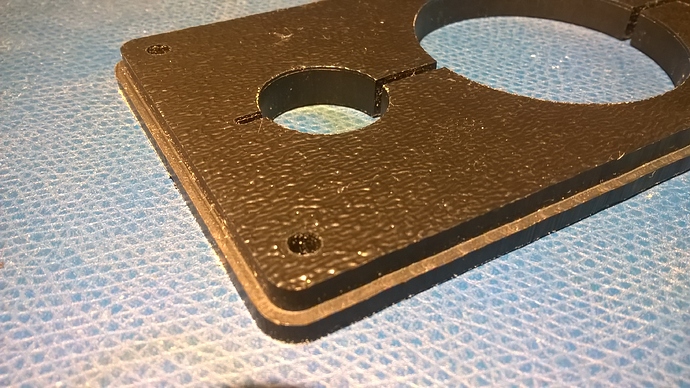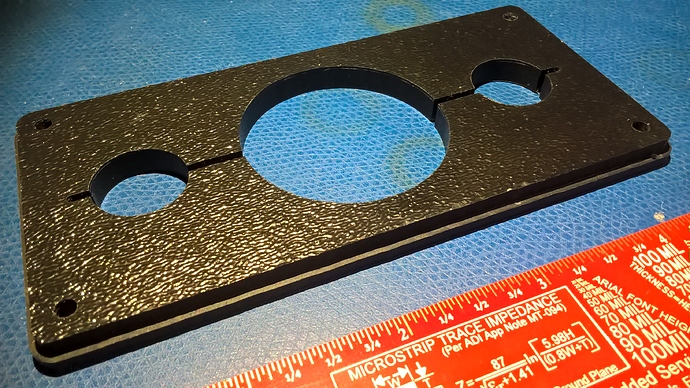Proper hold down technique is key, for any material, as the cutter will try to lift the work. Plastics (acrylic, ABS, HDPE, etc) all tend to be worse than most metals due to low stiffness and tendency to creep, as well as tendency to being grabbed by the tool more easily. Techniques have been discussed here many times, and include tape (double sided and masking tape with superglue are both popular), fasteners directly to wasteboard (screws through drill points for the final product and/or waste areas) vacuum holding (pretty much the best, but not easy to set up), clamps and bars (cauls) to spread load (easy, but needs care to avoid the obstacles during machining, and the clamps/cauls often need re-positioning to get to areas they block), and a number of others.
As to material for an enclosure, ABS isn’t terrible to machine, but acrylic, polycarbonate, HDPE, nylon, and acetyl (delrin) are all easier. For enclosures, ABS is a good choice, and HDPE isn’t bad either. Acrylic sees a fair bit of use in the universe I am in, due to transparency, and holds up well. Tapped holes or nuts are used for acrylic, whereas HDPE is pretty ok with self tapping (thread forming) screws, and ABS is ok with the correct type of self tapper (thread cutting).
As for stiffer plastics, there was a recent discussion. Take a look at that thread for more info, but, to summarize, unless you want to bump cost up a lot, the stiffest materials are all in the ballpark of acrylic. Fibre reinforced materials are much stiffer, and high-priced specialties like PEEK are a good bit stiffer. Best advice I can give you is: don’t overthink it. Unless it is going to do harsh service like space, sub-sea, crash testing, etc. pick the material for the desired appearance and cost, as machining doesn’t differ much.

